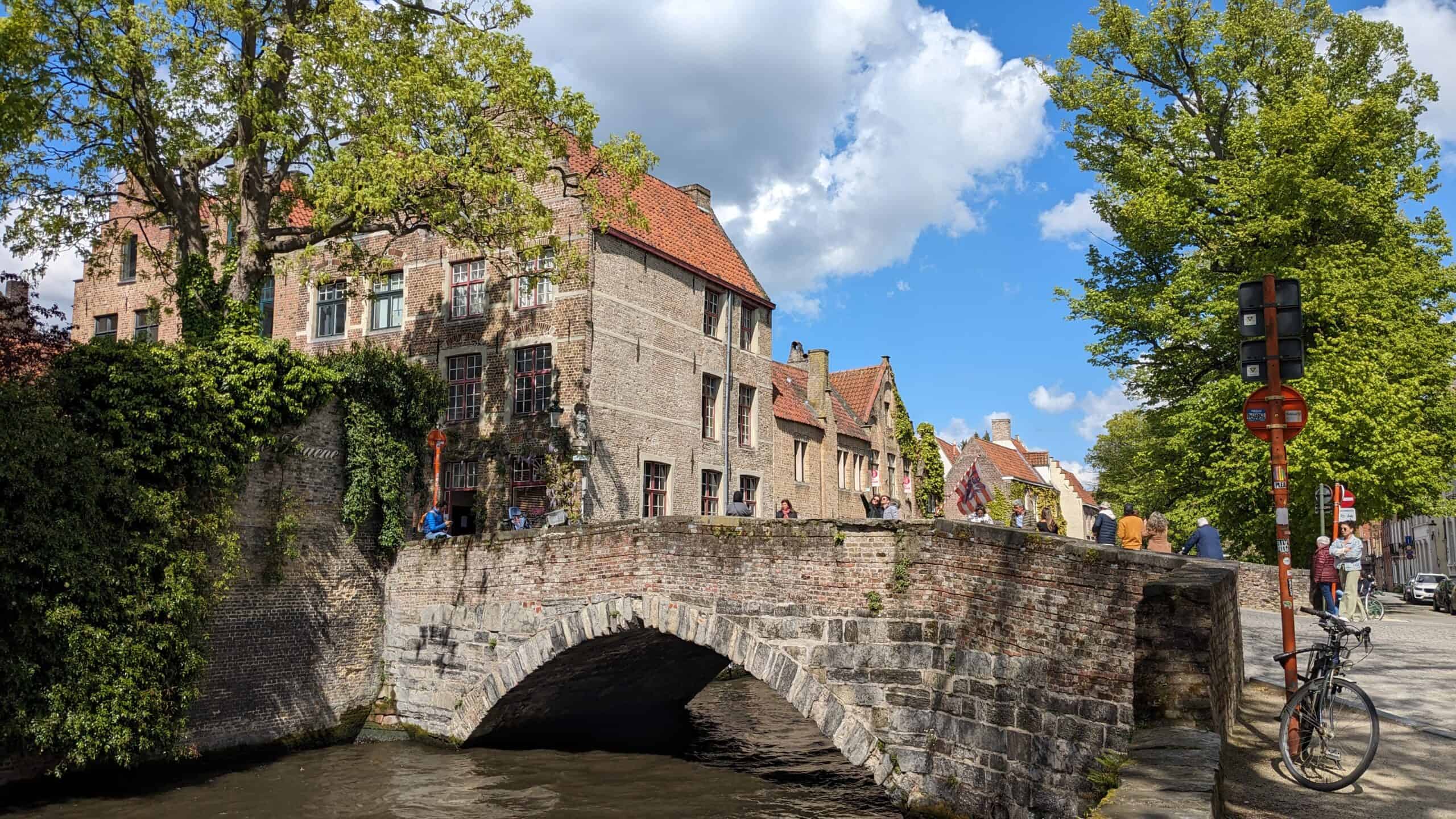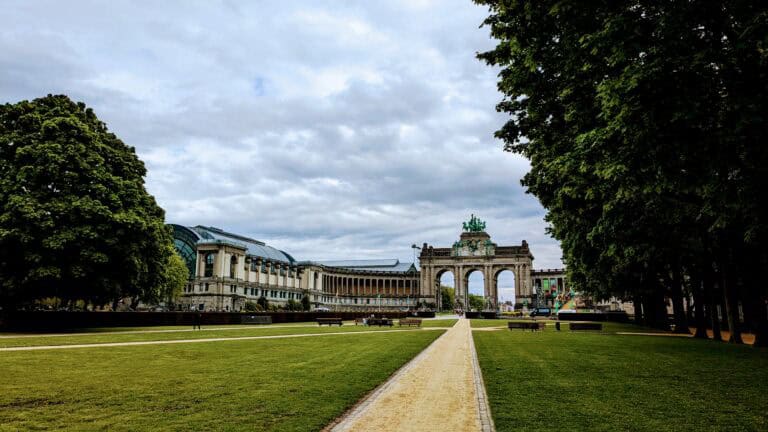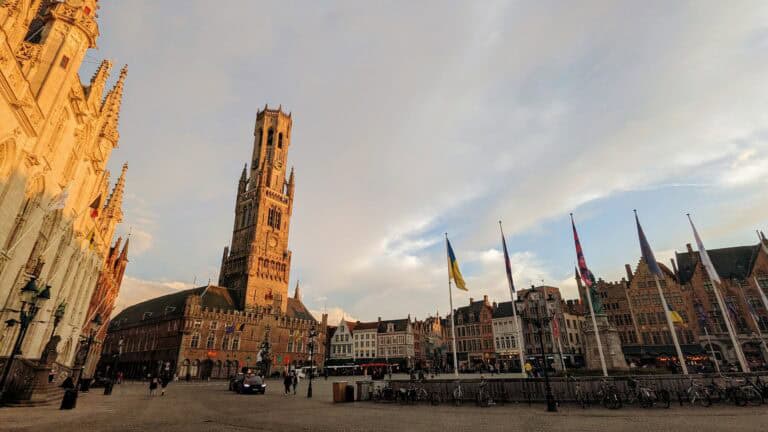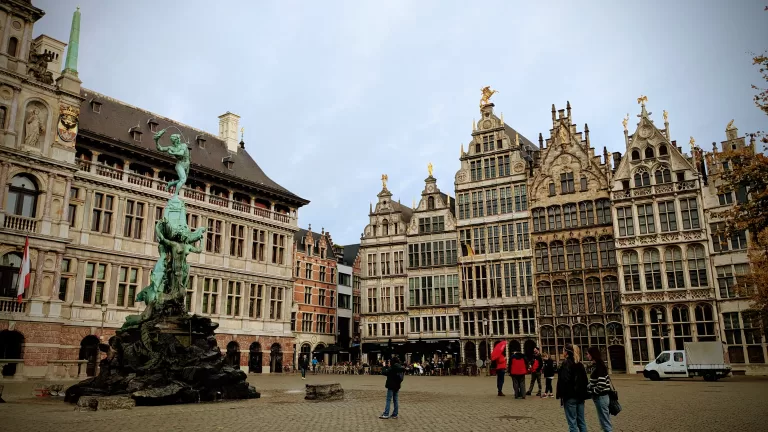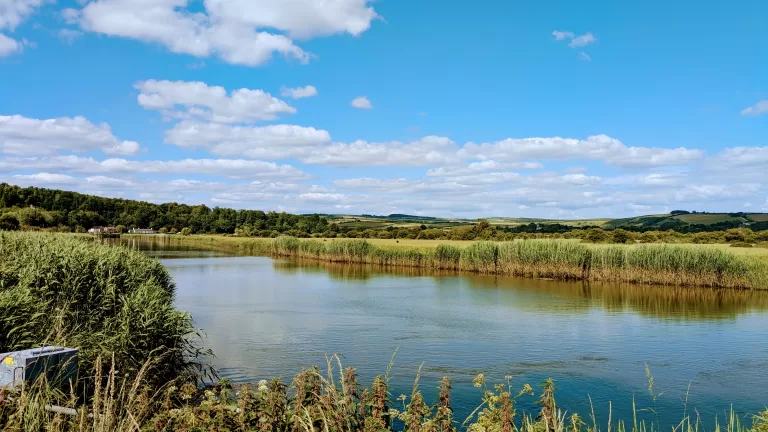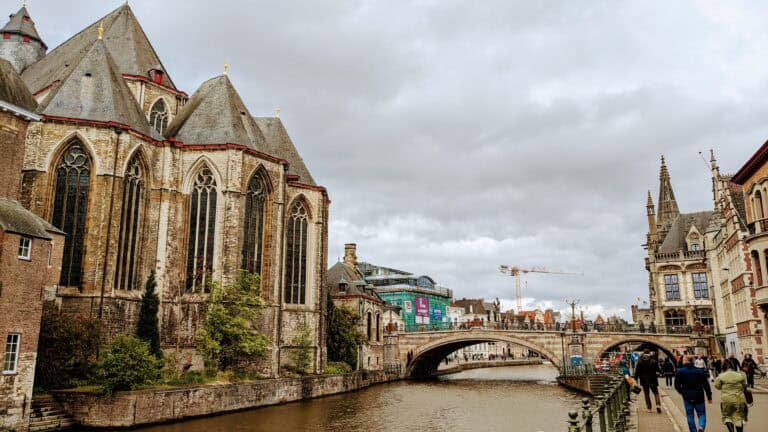How to take the Eurostar from London to Belgium (2025 practical guide)
Taking the Eurostar from London to Belgium is one of the quickest and most convenient ways to cross the Channel. In just over two hours, you can swap London St Pancras for Brussels Midi, and from there, connect to Bruges, Ghent, or Antwerp.
If you’ve never taken the Eurostar before, the process can feel a little opaque: the check-in is more like an airport than a train station, Brussels Midi can be confusing if you’re continuing onwards, and there are quirks to booking that aren’t obvious until you’ve done it once.
Here, you’ll find everything you need to know before you go – how to book the best fares, what to expect at St Pancras, how the border checks work, and how to continue your journey once you arrive.
Quick facts
- Journey time: ~2 hours (St Pancras → Brussels Midi/Zuid).
- Typical cheapest fares: from ~£39 one-way (book ~3 months ahead).
- Recommended arrival at St Pancras: 60 minutes before.
- Luggage: Standard = 2 pieces + 1 hand luggage (no weight limit); Premier allows 3 pieces.
Why take the Eurostar instead of flying?
Flying between London and Brussels looks short on paper, but by the time you’ve factored in airport security, waiting at the gate, and the transfer into the city centre, the train wins every time.
- Speed: St Pancras to Brussels Midi in just over two hours.
- Convenience: Depart from central London, arrive in central Brussels.
- Luggage: Two suitcases plus a cabin bag included, with no weight limit and no liquid rules.
- Comfort: Spacious seats, no middle rows, and power sockets at your seat.
- Eco-friendly: Taking the Eurostar produces up to 97% less CO₂ than flying. If you’re interested in reducing your environmental footprint then check out our guide to sustainable travel.
And if you book early, tickets can be as cheap as £39 each way – often less than the cost of flying.

Booking Eurostar Tickets
Booking your ticket and getting the best price
Eurostar tickets are released around six months in advance, and the cheapest fares usually sell out first. If you’re flexible, book as early as possible – standard tickets can start at around £39 one-way, but expect to pay much more if you book last minute. Eurostar often run sales (join our newsletter to be alerted to them) and so it’s not hard to find cheap tickets if you book in advance.
Tip: Eurostar doesn’t do last-minute discounts – the later you leave it, the more expensive it gets. If you know your dates, book early.
You can book directly on the Eurostar website, or via platforms like Trainline and Omio if you prefer to compare connections. Once bought, you don’t need to print them – etickets are fine.
See our post “Faster, more comfortable and (often) cheaper: why you should take the Eurostar” for the pros and money-saving angles.
Ticket classes
There are three classes:
- Eurostar Standard – the cheapest option, comfortable seats, café-bar available. It’s like getting a normal train.
- Eurostar Plus – a bit nicer, with more spacious seating, light meal and a drink included. Sometimes the difference in price is only £10-£15 – at this price, it’s definitely worth it (anything more than this then we’d probably just go standard class).
- Eurostar Premier – flexible tickets, three-course meal, access to lounges. It’s a lot more expensive with only a small improvement, so we’ve never travelled in this class.
Unless you’re travelling for work or want extra space, Standard is more than fine.
Departing from London St Pancras
All Eurostar services to Belgium leave from St Pancras International in London, right next to King’s Cross.
Check-in is simple: you’ll scan your ticket, go through security, go through British passport control, and then go through French passport control. It can be a bit chaotic if it’s busy, as there’s limited space (it’s about 20 metres from start to finish), but you should get through within 10 minutes.
It’s still worth arriving about 1 hour before departure. Eurostar ticket checks typically close 30 minutes before departure for Standard/Plus and 15 minutes for Premier. Boarding is announced about 20 minutes before the train leaves.
Facilities at St Pancras station are great before you go through passport control – there are bars, restaurants, cafes and shops right next to the Eurostar lounge. But, once you’re through, it’s more limited. There’s a few cafes and shops, and seating – but if more than one train is leaving that hour, it can get very busy. You may want to buy food or drink before you go through security (remember there’s no liquid allowance, but make sure you’re within the luggage allowance).
Don’t forget – you can normally bring your own unopened wine or beer on board, which might be cheaper (and nicer). It’s great for bringing home some Belgian beer (just don’t go crazy, Eurostar can refuse excessive amounts).
On board the Eurostar: London to Brussels
Seating is assigned; you’ll find your seat number on your ticket. If you’re in Eurostar Plus then you’ll register with an attendant before you get on, who will point you to your seat. If you’re in standard, just step on and find your own way.
Once you’re on board, the journey is smooth and straightforward. You’ll be in Brussels in just over two hours, with nothing more demanding than showing your ticket when asked (if in standard class).
There’s free WiFi the whole way and power sockets at most seats. There’s a cafe-bar serving coffee, snacks and drinks. You’ll get a light meal and drink if in Eurostar Plus.

Arriving in Brussels and onward travel
Eurostar trains arrive into Brussels Midi/Zuid, the city’s main station. You’ve already been through French passport control (to get you into the Schengen zone) so you can walk straight out and don’t need to go through customs, baggage or passport control. Easy!
Going into Brussels
From here, you can either head into central Brussels (the metro and trams run directly from the station) or catch a domestic train if your final destination lies elsewhere.
Central Brussels is walkable from the station in about 30 minutes, depending on where you stay. The station and surrounds can feel a bit unsafe at night, but nothing too bad.
Heading onwards to other destinations in Belgium
Belgium’s trains are frequent, cheap, and easy to use.
You’ll likely arrive on platform 1 or 2, but it could be platforms 3-6 if the train is going onto Amsterdam. You just need to walk to the right platform for your onward train. You can make the transfer in as little as 20 minutes. But if you do miss the next train, depending on your destination then the following train will likely be within 15-30 minutes.
You don’t need to book train tickets in advance – you can get a ticket from the machines using debit/credit/contactless card or the SNCB/NMBS app – but you may want to buy it online if you have a short transfer time.
You can reach most destinations in Belgium quickly:
- Brussels → Bruges: ~1 hour
- Brussels → Ghent: ~35 minutes
- Brussels → Antwerp: ~45 minutes
This makes Brussels the perfect hub, whether you’re staying in the city or connecting onwards. Check out all our Belgian content for the best places to go in all the main Belgian cities.

Alternative: London to Lille
Eurostar also stops at Lille Europe (useful if you have a specific onward connection). For most short-break travellers Brussels remains the better hub, but if your plans include Belgian towns near the French border (or you’re combining France and Belgium), it can be worth checking Lille connections on Trainline or Omio before you book.
If you’re planning a longer Belgium trip, see our Belgium travel guides.
Ready to Board?
Eurostar is one of the fastest, most convenient ways to put a Belgian city break on the calendar – direct, roomier than a plane and often kinder to the planet.
Why wait:
- Book your tickets now: – tickets usually go on sale ~6 months ahead. Check Eurostar or compare on Trainline/Omio, or sign up to our newsletter for advance notice of Eurostar sales.
- Plan where you’ll go next: start with our Belgium travel guide for practical tips, itineraries, and budget advice. Or dive into our detailed city guides for the best things to do, places to eat, and hidden corners worth exploring in Bruges, Ghent or Antwerp.
This page contains affiliate links. If you make a purchase through one of these links we make a small commission to help run this site, at no cost to you. Making a commission never affects the advice we give - see our content policy.

